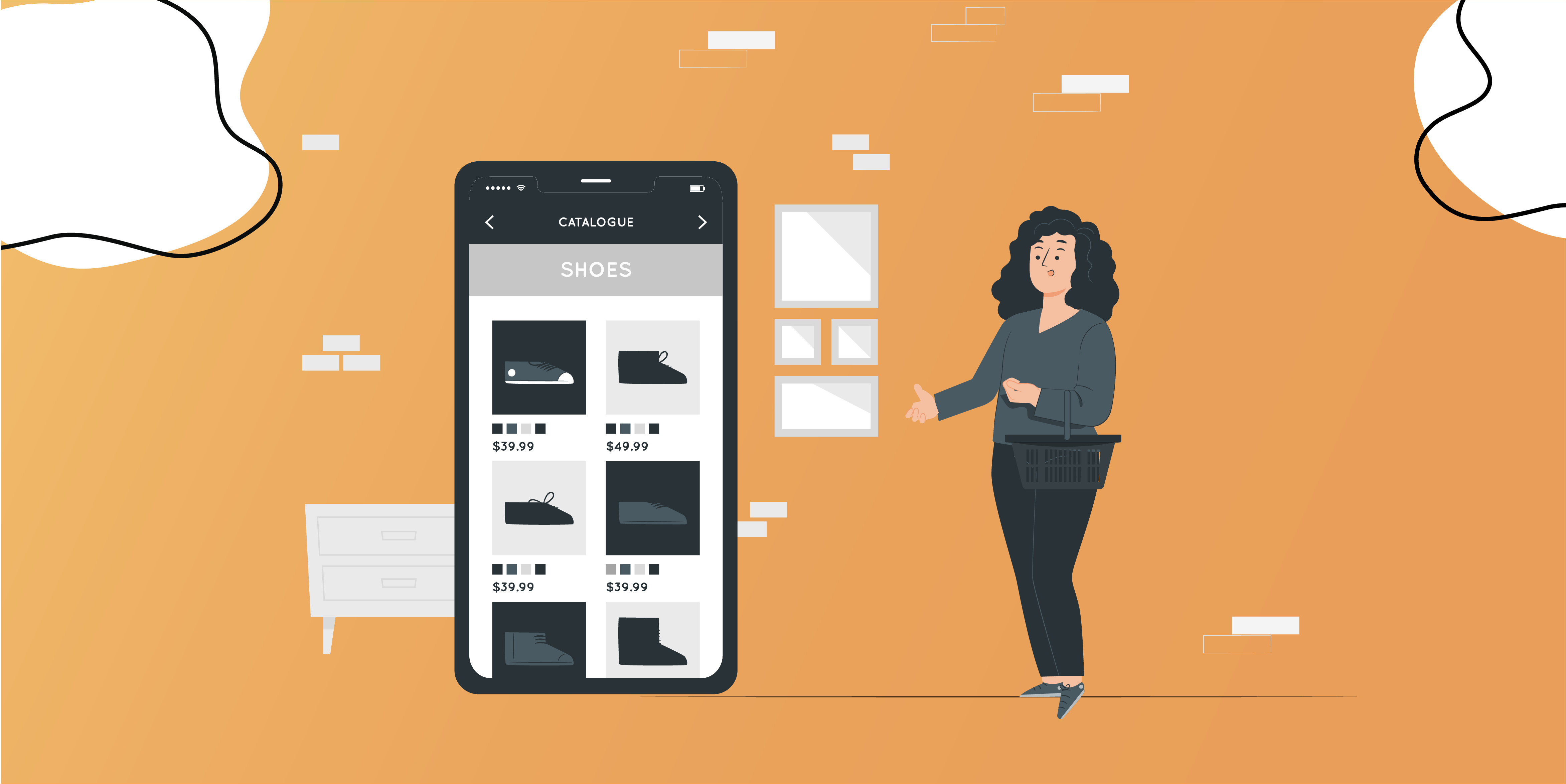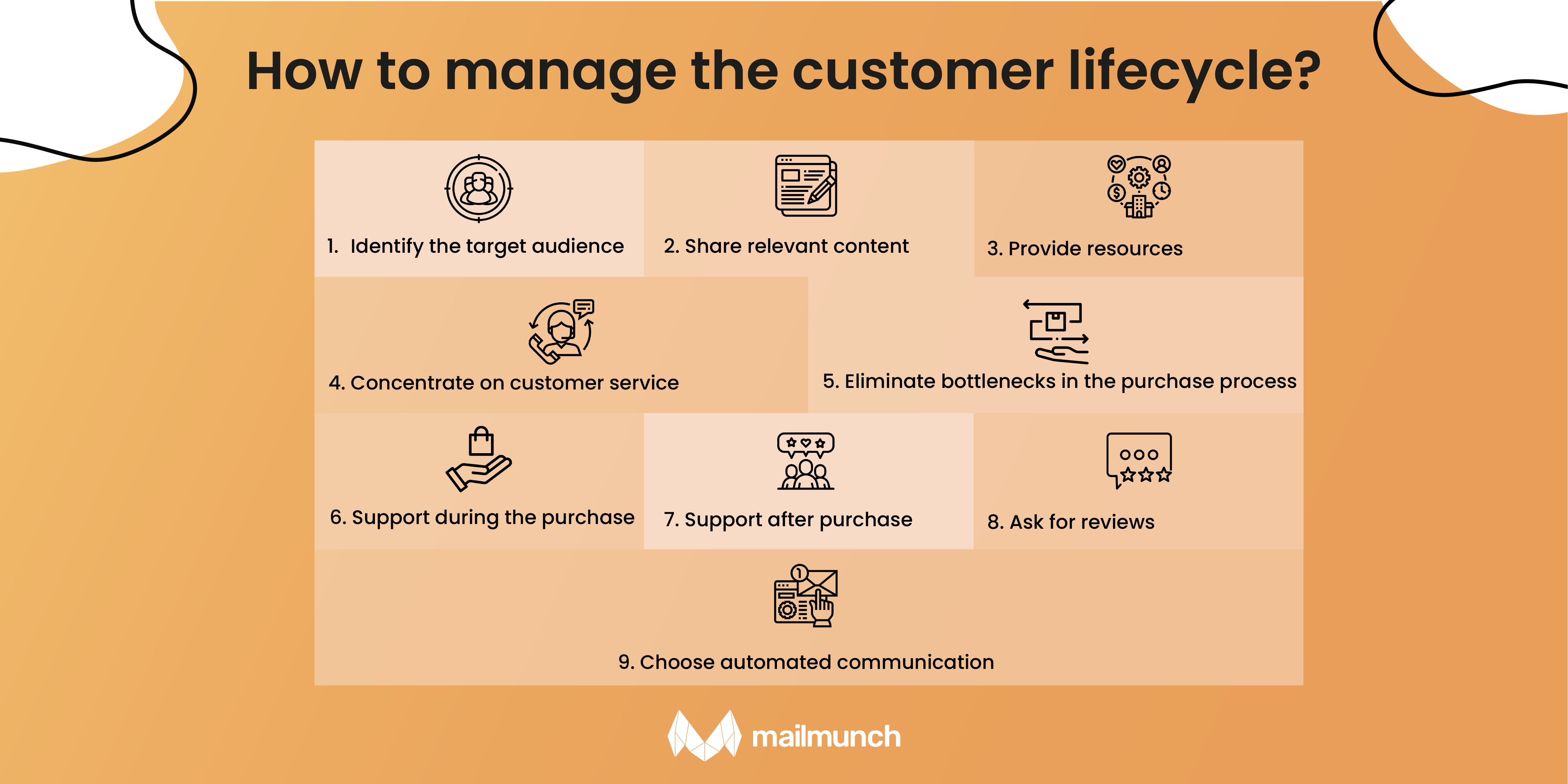

Last updated on
May 10, 2023
Every business needs the support of an indispensable resource, its customers. Respecting the mutual relationship between the business and its customers is a great way to steer the growth of your business. Customers, the most critical asset, undergo several stages before becoming long-term customers.
Read on to learn more about a customer’s lifecycle and why a business needs to manage it efficiently.
The customer lifecycle is a process that encompasses the various steps a prospect goes through before becoming a customer. Everything, from brand awareness to the final purchase, forms part of the cycle. A satisfied customer becomes a long-standing customer. Therefore, the brand must deliver an excellent customer experience through the various stages of the customer lifecycle.
There is nothing like securing loyal customers for a business. The organization has a significant role to play in creating customers who are devoted to the brand. The role of a business does not stop with just acquiring customers. Every stage of the customer lifecycle has to be assessed for its success, and corrective action, if necessary, needs to be taken.
The brand has to steer the customer’s journey by taking proactive steps. Amidst heavy competition, it is easy for customers to get distracted. Customer lifecycle management is the process by which the brand guides the customer in every conversion stage. Once you establish trust, you can be rest assured of creating long-standing customers who can also become your brand ambassadors.
There are five stages in the customer lifecycle. Let us break down these stages and explore each of them.

In this first stage of the lifecycle, the customer becomes aware of the brand. A brand uses various marketing strategies to create awareness. The prospect may also know about the brand through word-of-mouth reviews or online testimonials.
While each stage is essential for a business, the awareness stage is the most basic. The brand should utilize any available opportunity to create brand awareness. This is easier when you research well about your customers. Your research will let your business know who your prospects are and how to convert their interest into sales. In the present times, digital media is widely used to create awareness.
The next stage in the customer lifecycle is a consideration. Here, the prospect makes the make-or-break decision crucial to the brand. After gaining awareness about your brand, they consider several aspects before deciding if they want to continue.
A prospect may move out of the cycle if there is no intention to proceed after the brand awareness stage. Your marketing strategy should be compelling at this stage so that you get all potential customers. If the prospect forms a positive impression of your brand, there will be further movement down the sales funnel.
This is the conversion stage, where the prospect has turned into your customer. A business transaction happens when the transfer of goods or services happens in exchange for monetary consideration. Some circumstances force a buyer from dropping out even in the last stage. During an online purchase, cart abandonment is found to be a significant deadlock.
A company should analyze the reasons for the same and avoid them so that a practical purchase occurs. Follow-up with the customers gives the lifecycle the much-needed push.
A company cannot be satisfied that a sale has been completed. It should always be on the go to take steps to retain customers. There is no better asset to a company than its loyal customers. Retention is, therefore, an essential part of the customer lifecycle. A satisfied customer comes back to the brand again and again.
This makes the brand trustworthy, further laying the foundation for creating more customers. This is the stage when the connection between the brand and the customer is strengthened.

As the retention stage forms the foundation for creating customers, the advocacy stage moves further in achieving it. Your loyal customers become your brand ambassadors. They vouch for your brand's reliability through word of mouth or other channels.
It creates awareness in other potential customers, and the cycle continues again. The brand can also request feedback from the customer after the sale has been made.
Before learning how to analyze the lifecycle, you should know why you should analyze the lifecycle. Analyzing assists you in learning how your marketing strategies are supporting the lifecycle. It also helps in locating the flaws and initiating necessary corrective action. This will result in a smooth flow in the customer lifecycle.

Customer lifecycle management becomes essential to maintain the flow without any hindrance. The following pointers assist in the management of the lifecycle.

It is essential to direct your efforts in the proper direction. For this, identification of the target audience is crucial. You cannot create engagement with someone who is not interested in your products or services. Buyer persona identification streamlines your marketing strategy. The right market segment, in terms of demography, spending habits, etc., helps locate the right audience. Once you are sure about the target audience, you can create interest in them, sustain their interest through various promotional programs, and convert them into customers.

In a highly competitive environment, you must make the the purchase decision easier for buyers. You should take steps to keep them engaged. Sharing relevant content through emails, apps for social media posting, affiliate marketing content, etc., are some ways this can be done. When you are in constant touch, the customer will most likely be reminded of your brand when finalizing the buying decision. This is one of the most effective marketing strategies to convert leads into customers. Email open rates and shares on social media posts are indicators of your customer engagement.
When the prospects become aware of the brand, they may develop further interest in knowing more about the company. They need resources that can facilitate in providing relevant data. The company’s website may also be one such resource. It contains information like the latest financial statement or milestones achieved, etc. An FAQ section may also help a prospect get better information about the company.
Also, launching webinars to discuss the latest developments and offering lead magnets such as ebooks can help you manage acquisition.
An emphasis on customer service brings your brand closer to the customers. An easily reachable customer support team can go a long way toward better relationships. The customers may have several concerns that need to be addressed by the company before they can finalize a purchase. The role of your sales team is significant here.

A tedious check-out process may only go well with some customers. It may lead them to leave the purchase midway. Facilitating guest check-out and ensuring the safety of online transactions are some ways that can remove the hurdles in the purchase process. The customer should be confident with your system.
Even during the purchase stage, a customer may need assistance. Many doubts could arise, and your portal and the support system should be highly proactive in helping the customers at this stage. Get back to your customers to discover why they have yet to proceed to the check-out stage. An AI-powered chatbot that can interact with customers to identify glitches can help immensely. The buyer can clarify the product or service by chatting with the customer support team.
A business must support customers after the purchase stage to retain them for long. The after-sale support system has to be robust to assist the customer whenever there is any need. Emails enquiring about how the buyer feels about the product, informing them about the customer support contact team, and providing an easy returns process are some ways of being in touch.
The business should also communicate with the buyers about new launches or upgrades to the product they purchased. This will keep the business in the good books of the buyer.
For a small business, keeping track of the customers and communicating personally is easy. This is different from the case of a big business. To make things simpler, it is wise to choose automated communication. Your messages will be delivered to the buyers without fail at the appointed time.
This lets you concentrate on other tasks, and at the same time, your customers are also included. This ensures personal connectivity with the customers, which goes a long way in fostering strong relationships.
Email automation can help you in staying in touch with customers. Also, with drip campaigns, you can provide timely content to help them make crucial buying decisions. Also, you can set up autoresponders to cater to their queries instantly.
This is yet another proven strategy to manage customer lifecycle. When a purchase is complete, leave some time for the customer to use the product and then approach them for reviews. You could also send a questionnaire to find out what they found best in the product and what could be improved.
A referral program also motivates customers. They get discounts or cashback on their next purchase when they refer people to the brand. Brands can create loyal customers this way.

We now know about the stages in the customer lifecycle and how important they are for a business. The business should take the necessary steps to manage the lifecycle to assist in the growth of the business. In this digital world, the support of tools can significantly help manage the customer lifecycle. Use tools effectively to support your customer’s journey into becoming long-standing customers.
Mailmunch is an email marketing tool that can immensely help your business. Customer lifecycle management is easier with the help of such tools from Mailmunch. They can help your business strike the right chord through automated and customized email campaigns, offer actionable insights about your marketing efforts and provide customized coupons to increase customer engagement.
A voracious reader and a music lover, Ammar has been writing engaging and informative content for over 3 years for B2B and B2C markets. With a knack for writing SEO-optimized content, Ammar ensures the results speak for themselves.
Tags: